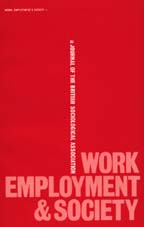Article contents
Household Division of Labour: Generation, Gender, Age, Birth Order and Sibling Composition
Published online by Cambridge University Press: 11 June 2002
Abstract
Many studies have examined the household division of labour from a gender perspective, but comparatively few have considered age and the intergenerational distribution of household work. Using empirical evidence from my ethnographic study of rural households in Bolivia, I argue that whilst adult household labour is highly determined by gender roles, children's unpaid household work often cuts across gender stereotypes and does not merely mirror the adult division of labour. Furthermore, this paper argues that it is not sufficient to include only an intergenerational and gender analysis of household divisions of labour but that other intragenerational issues also need to be considered. Drawing on both children's and adults' perspectives, this paper discusses the nature of generation-specific tasks not only by gender but also by age, birth order and sibling composition. Whilst the paper is based on a case study of a rural community in a low-income country, it highlights the importance of the sibling order which has frequently been overlooked or ignored in household divisions of labour throughout the world. The findings show that the allocation of household labour in rural Bolivia is worked out according to generation, age, gender, birth order and sibling composition.
- Type
- Original Articles
- Information
- Copyright
- 2001 BSA Publications Ltd
- 82
- Cited by




